Abstract
The effect of several controlled variables on the peak titer and fold increase of Rift Valley fever virus grown in suspension culture on two variants of Earle's L cell, L-DR and L-MA clone 1-1, was studied. No significant amount of cell-associated virus was found at 24 hr, indicating a release of virus soon after its formation. Mild sonic treatment of the virus produced in serum-free medium increased the infective titer about 10×. This difference was not observed with virus produced in medium supplemented with serum. Peak titer was not affected by medium used during the infection period, by multiplicity of inoculum (MOI), or by initial cell concentration within the test range of 104 to 2 × 106 cell/ml. Cell strain employed influenced titer, because the L-DR cell did not produce virus efficiently at low MOI and low initial cell concentration. The time of peak titer and fold replication was dependent on MOI and initial cell concentration. Differences in virus propagation in monolayer and suspension systems are discussed.
Full text
PDF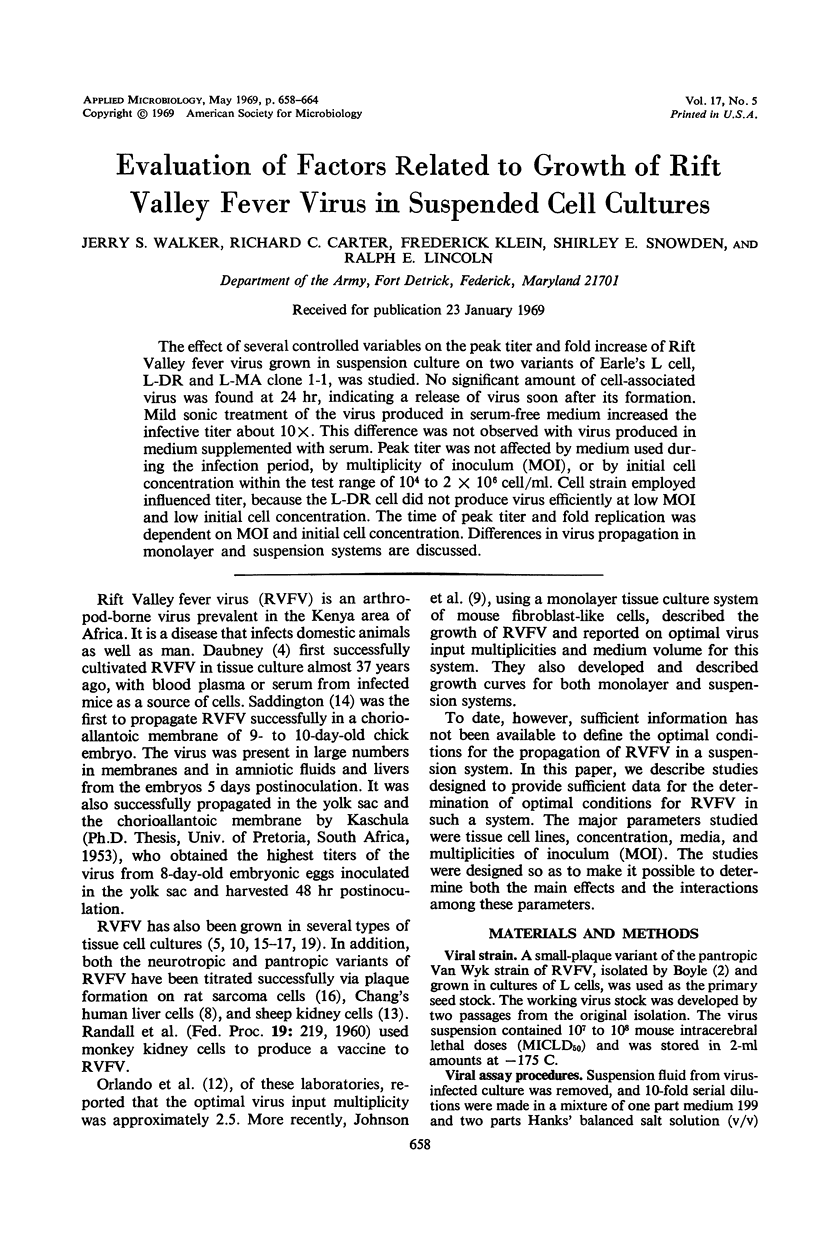
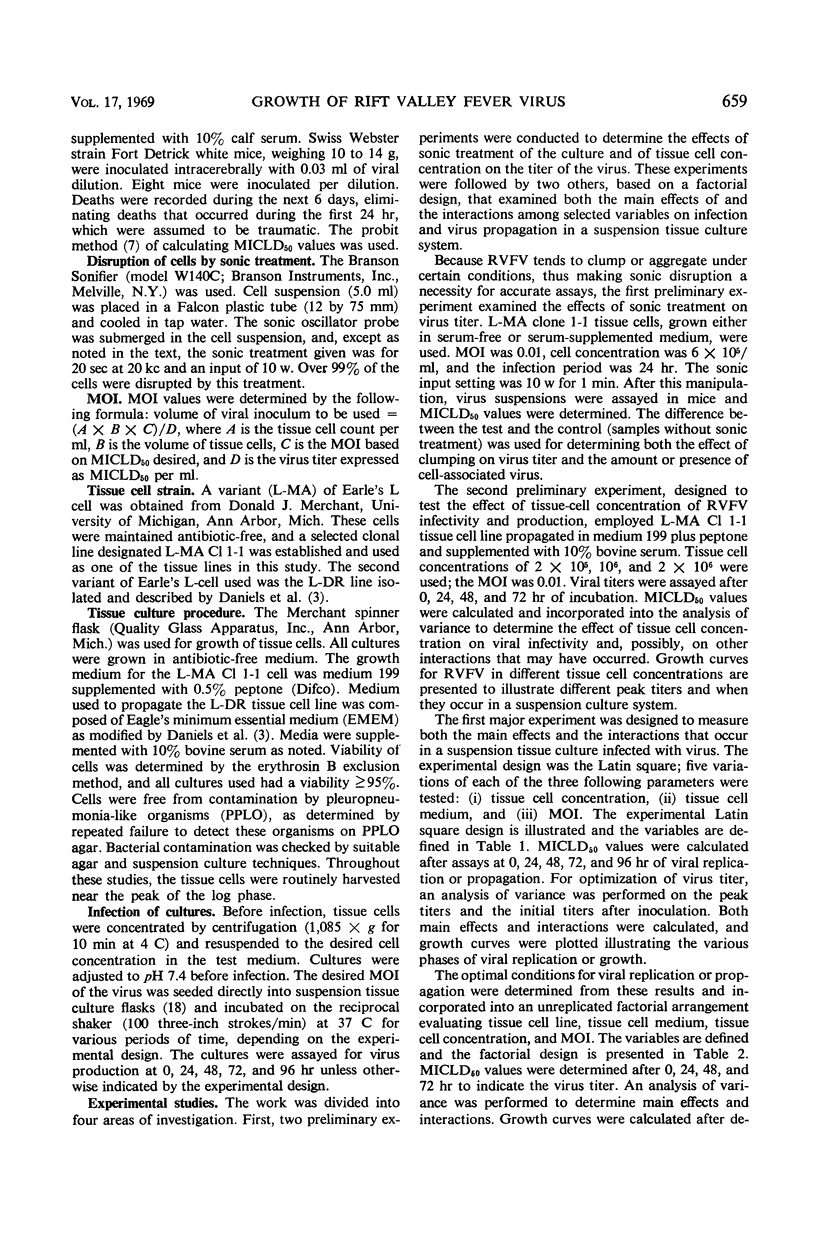
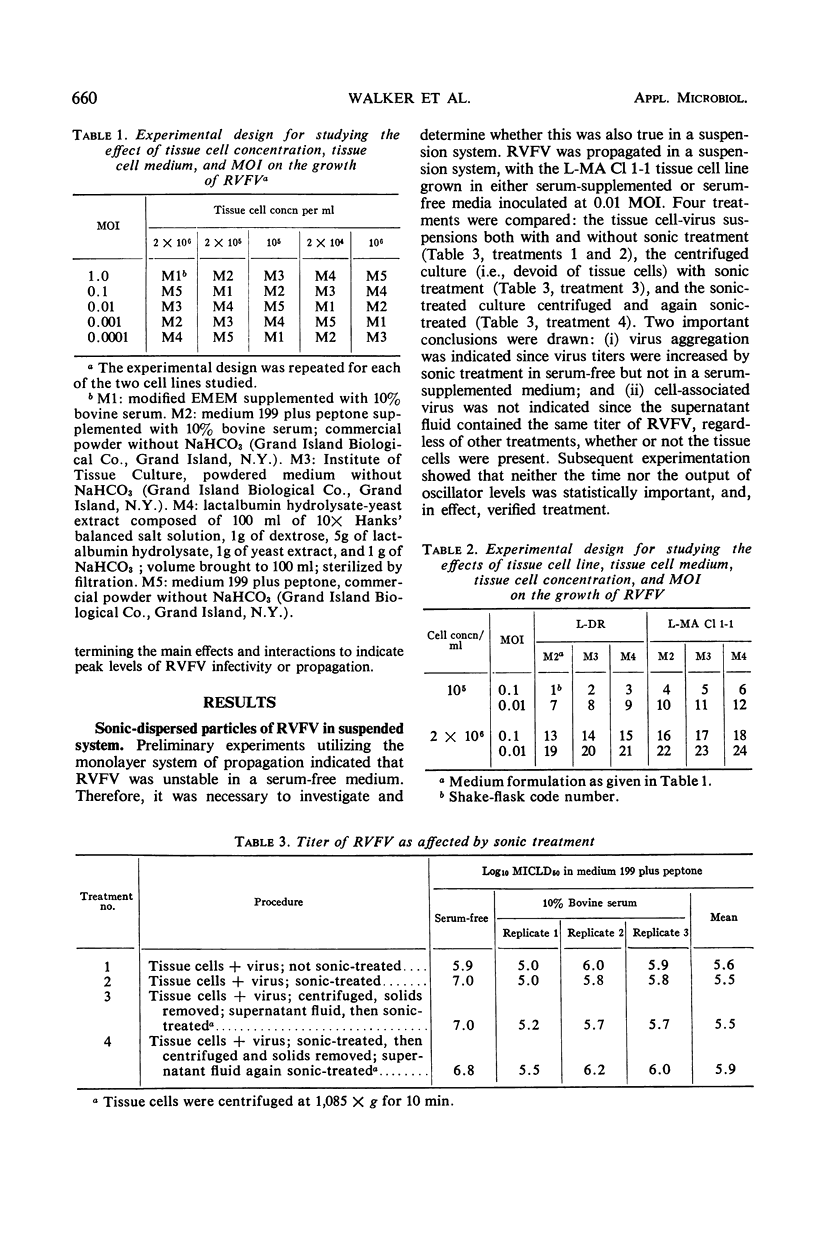
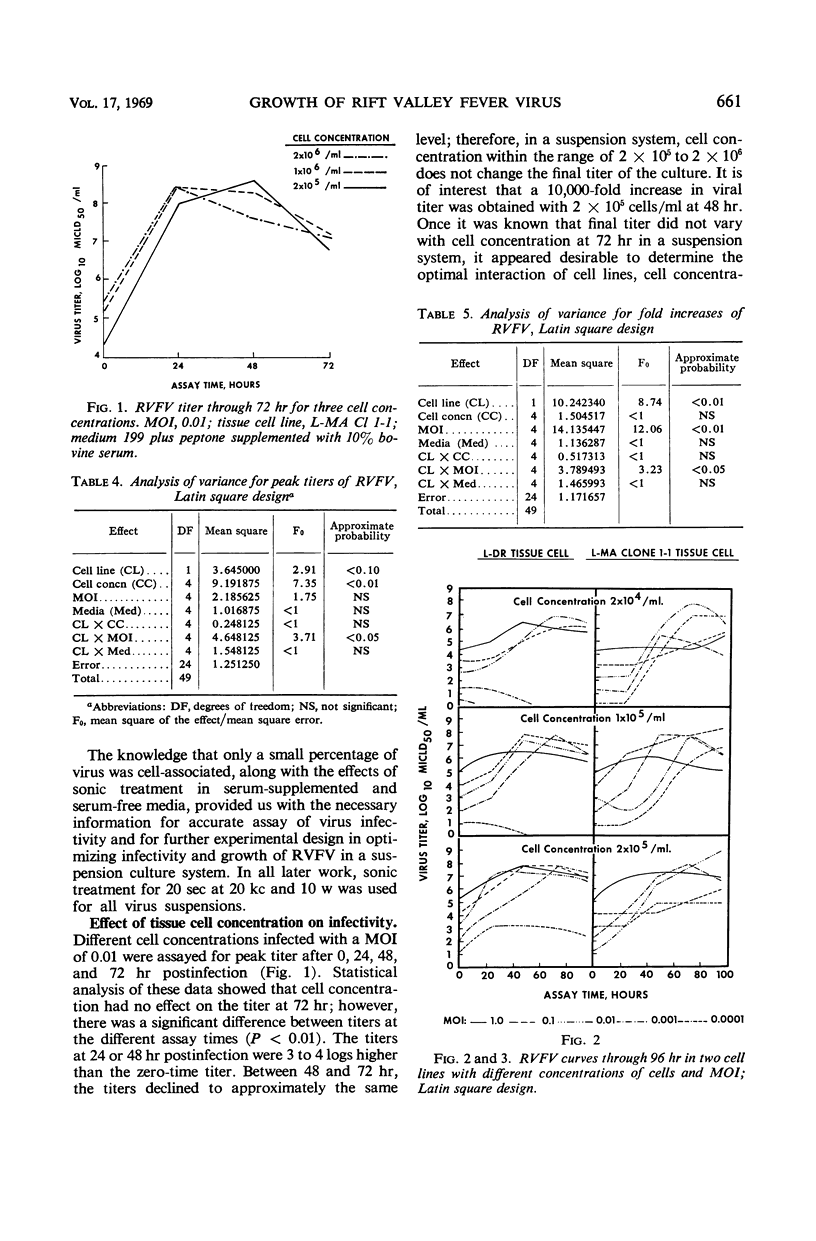
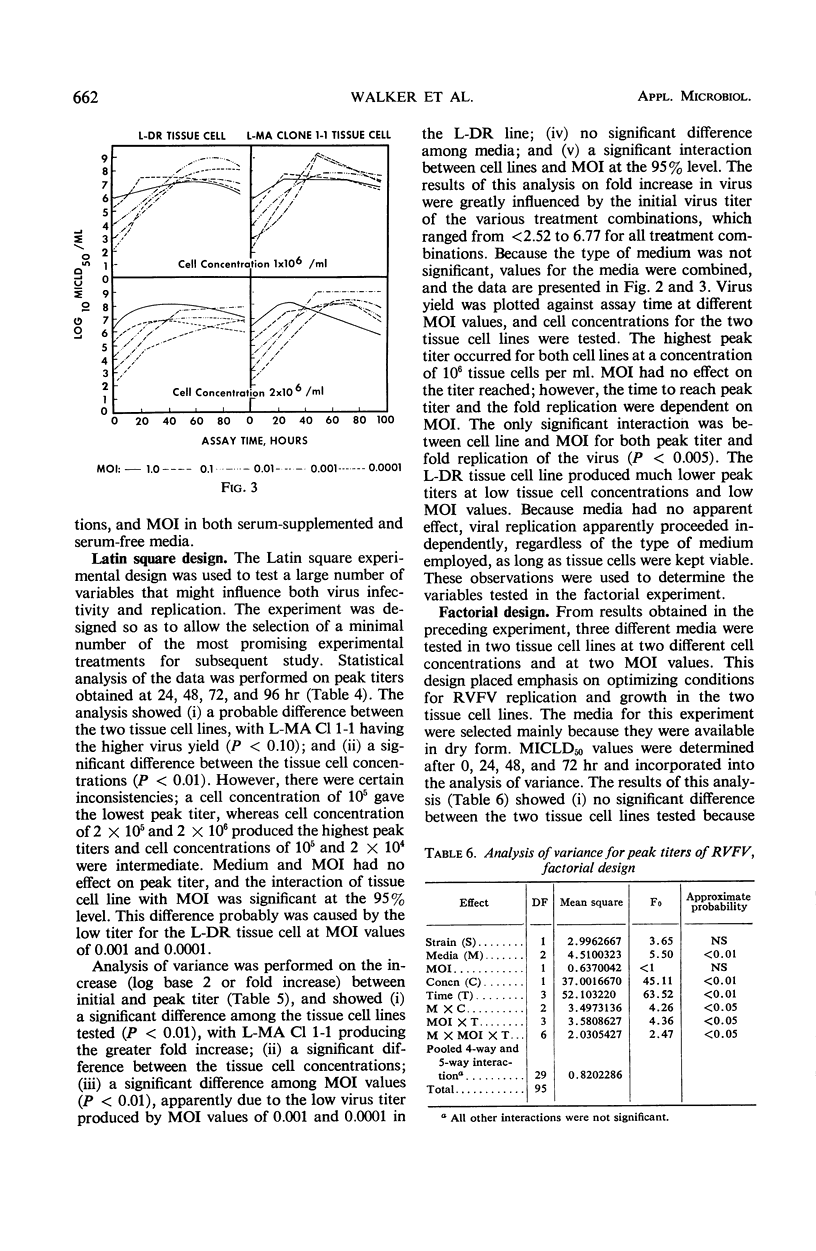
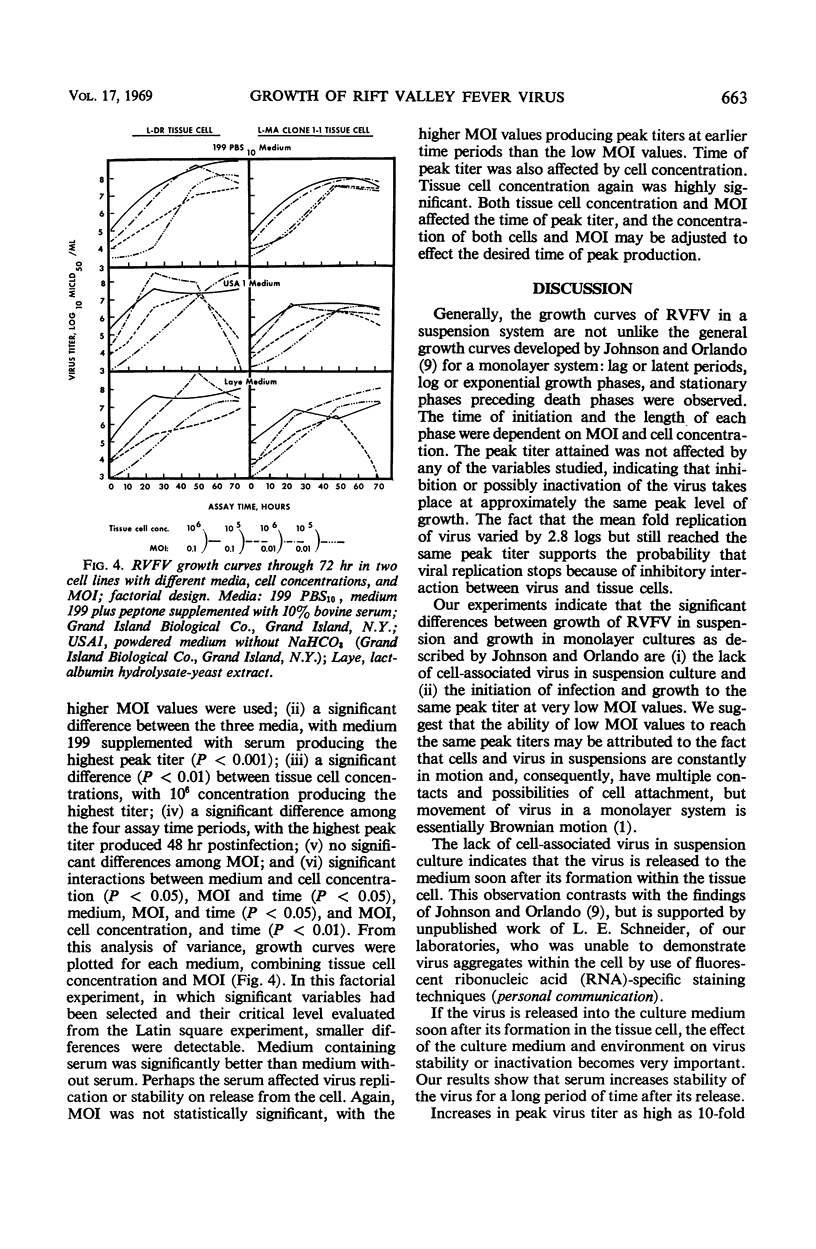
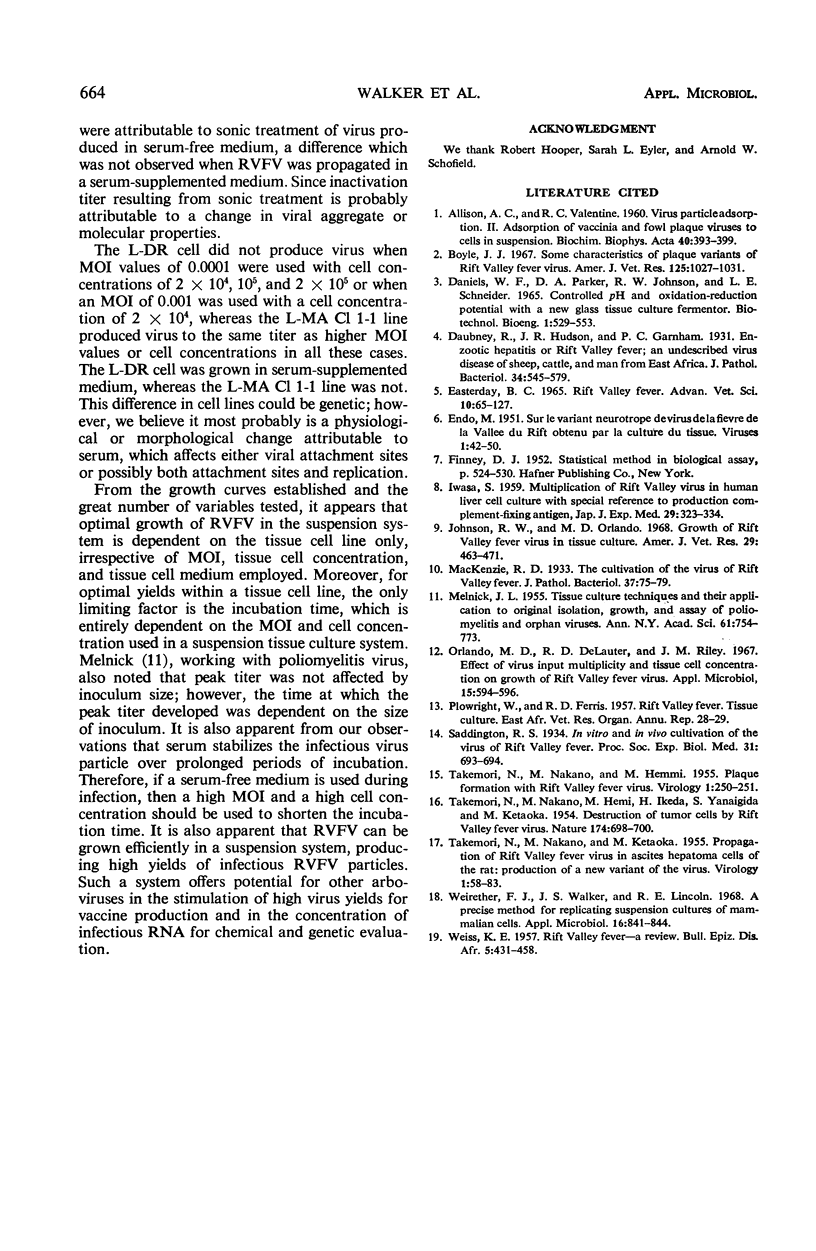
Selected References
These references are in PubMed. This may not be the complete list of references from this article.
- ALLISON A. C., VALENTINE R. C. Virus particle adsorption. II. Adsorption of vaccinia and fowl plague viruses to cells in suspension. Biochim Biophys Acta. 1960 Jun 3;40:393–399. doi: 10.1016/0006-3002(60)91379-2. [DOI] [PubMed] [Google Scholar]
- Boyle J. J. Biological characteristics of plaque variants of Rift Valley fever virus. Am J Vet Res. 1967 Jul;28(125):1027–1031. [PubMed] [Google Scholar]
- Easterday B. C. Rift valley fever. Adv Vet Sci. 1965;10:65–127. [PubMed] [Google Scholar]
- IWASA S. Multiplication of Rift Valley fever virus in human liver cell culture with special reference to production complement fixing antigen. Jpn J Exp Med. 1959 Aug;29:323–334. [PubMed] [Google Scholar]
- MELNICK J. L. Tissue culture techniques and their application to original isolation, growth, and assay of poliomyelitis and orphan viruses. Ann N Y Acad Sci. 1955 Sep 27;61(4):754-72; discussion, 772-3. doi: 10.1111/j.1749-6632.1955.tb42532.x. [DOI] [PubMed] [Google Scholar]
- Orlando M. D., DeLauter R. D., Riley J. M. Effect of virus input multiplicity and tissue cell concentration on growth of Rift Valley fever virus. Appl Microbiol. 1967 May;15(3):594–596. doi: 10.21236/ad0810492. [DOI] [PMC free article] [PubMed] [Google Scholar]
- TAKEMORI N., NAKANO M., HEMMI M., IKEDA H., YANAGIDA S., KITAOKA M. Destruction of tumour cells by Rift Valley fever virus. Nature. 1954 Oct 9;174(4432):698–700. doi: 10.1038/174698b0. [DOI] [PubMed] [Google Scholar]
- TAKEMORI N., NAKANO M., HEMMI M., KITAOKA M. Propagation of Rift Valley fever virus in ascites hepatoma cells of the rat: production of a new variant of the virus. Virology. 1955 May;1(1):58–82. doi: 10.1016/0042-6822(55)90006-4. [DOI] [PubMed] [Google Scholar]
- TAKEMORI N., NAKANO M., HEMMI M. Plaque formation with Rift Valley fever virus. Virology. 1955 Jul;1(2):250–251. doi: 10.1016/0042-6822(55)90020-9. [DOI] [PubMed] [Google Scholar]
- Weirether F. J., Walker J. S., Lincoln R. E. A precise method for replicating suspension cultures of mammalian cells. Appl Microbiol. 1968 Jun;16(6):841–844. doi: 10.1128/am.16.6.841-844.1968. [DOI] [PMC free article] [PubMed] [Google Scholar]


